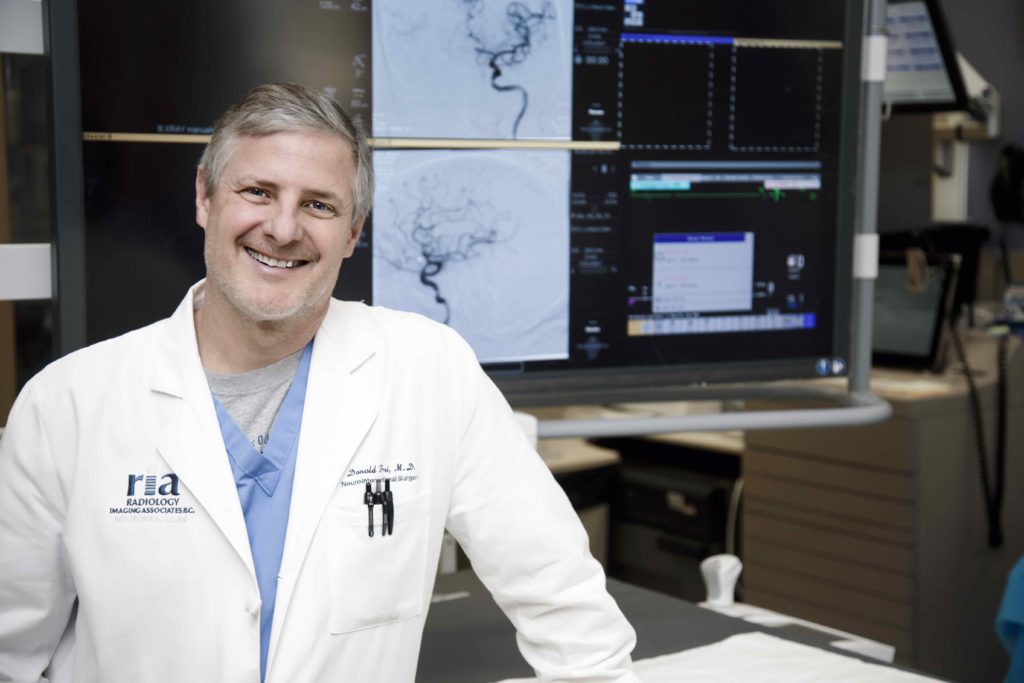Advanced Stroke Treatment at Sky Ridge Proves Lifesaving for Aurora Resident | by

Julia Neumeier is proactive about taking care of her health. The 78-year-old Aurora resident tries to keep her high blood pressure in check by exercising, eating healthy and taking prescribed medications. Despite these efforts, she’s had three strokes in the last five years. The most recent one, which occurred on October 31, 2018, was the most dangerous. “The doctors at Sky Ridge Medical Center told me there was only an 11 percent chance that she would make it,” recalls Julia’s husband, Orvin.
Julia was getting her annual mammogram at an imaging center in the Denver Tech Center area when the stroke happened. Staff immediately called 911. While en route to the hospital in an ambulance, emergency medical technicians performed a brain imaging scan. After determining the size and location of the blood clot, they knew that Julia had the best chance of surviving if she received stroke care at Sky Ridge Medical Center.

MEDICAL TALENT IN SPADES
Last year, Sky Ridge Medical Center became the first hospital in southeast Denver to offer a stroke treatment called endovascular thrombectomy. During this minimally invasive procedure (also known as intra-arterial or mechanical thrombectomy), a surgeon threads a catheter through a patient’s femoral artery to reach the blocked artery in the brain. Devices inserted into the catheter then pull or suction the clot out of the artery.
The removal of Julia’s blood clot was particularly challenging. “It was a substantially large clot in the posterior cerebral artery. This artery is located at the base of the skull, making it a difficult area to access,” says Dr. Don Frei, a neurointerventional radiologist who sees patients at Sky Ridge Medical Center and Swedish Medical Center. To make matters worse, the clot broke into two pieces with each piece going in different directions. Surgeons now had to retrieve clots lodged in two different arterial sections.
When a person is having a stroke, every second counts. Clots restrict blood flow to the brain. Oxygen deprivation can destroy neurons critical for movement, speech and thinking. “You can lose up to two million neurons every 60 seconds,” says Dr. Frei. Fast treatment is key to saving a life and preserving brain function.
“About 45 minutes after Julia was brought into the emergency department at Sky Ridge and the brain imaging scans were completed, our stroke team began the procedure to access the femoral artery,” says Dr. Frei. “We had Julia’s blocked arteries cleared in less than 20 minutes.” The average time for an endovascular thrombectomy at Sky Ridge—from the start of diagnostic testing to confirm the location of a blood clot to its actual removal—typically takes less than one hour.

ACE UP OUR SLEEVE
Not all hospitals have the trained staff and technology to perform this lifesaving procedure. Many hospitals treat stroke patients with an intravenous medication called tissue plasminogen activator (tPA). The treatment is effective when given within 4.5 hours of symptoms, but the medication doesn’t always break up larger clots like what Julia had. Plus, it increases the risk of hemorrhage or bleeding in people who take blood-thinning medications. Julia had been taking blood thinners since having her first stroke in 2014. An endovascular thrombectomy was her best chance at survival.
FOLLOWING SUIT
Fortunately, Dr. Frei and his associates at Radiology Imaging Associates (RIA) Neurovascular are experts at performing this procedure. RIA Neurovascular is a national leader in neurointerventional surgery practices and has the most experienced group of physicians treating stroke in Colorado. “We perform a large volume of endovascular stroke treatments, which gives us great depth of experience,” says Dr. Frei.
When Julia awoke from the procedure, she was the same bubbly, enthusiastic person she had always been. “I didn’t have any paralysis or loss of movement or speech. I was mostly concerned with whether I had finished the mammogram or if I needed to go back,” she says. Her recovery was so remarkable that Orvin says the hospital staff refers to his wife as “the miracle woman of Sky Ridge.” “The odds certainly weren’t in her favor,” says Orvin. But not only did Julia survive, she suffered minimal damage from the stroke thanks to the fast actions of Sky Ridge’s doctors and their expertise performing an advanced stroke treatment.
After four days at Sky Ridge, Julia spent two weeks at Spalding Rehabilitation Hospital. There, she worked with therapists to regain her strength, improve her balance and sharpen her cognitive functions. Once at home, she continued with physical and occupational therapy for two more months. Today, Julia is back to walking in her neighborhood, playing card games with friends and participating in numerous social activities. She uses a fitness tracker to see how many steps she walks each day. She and Orvin recognize how fortunate she is to be able to do these things and to have more time to spend with their children and grandchildren. “It’s definitely a miracle,” she says.
Fast Facts About Strokes: The Centers for Disease Control and Prevention estimates that someone has a stroke every 40 seconds in America. One person dies every four minutes from stroke. If someone shows signs of stroke—facial drooping, limb numbness, confusion and speech difficulties—call 911 immediately.
Tags: Advanced Stroke Treatment, RIA Endovascular, Sky Ridge Medical Center
Leave a Comment
Please be respectful while leaving comments. All comments are subject to removal by the moderator.
